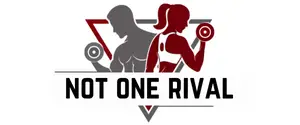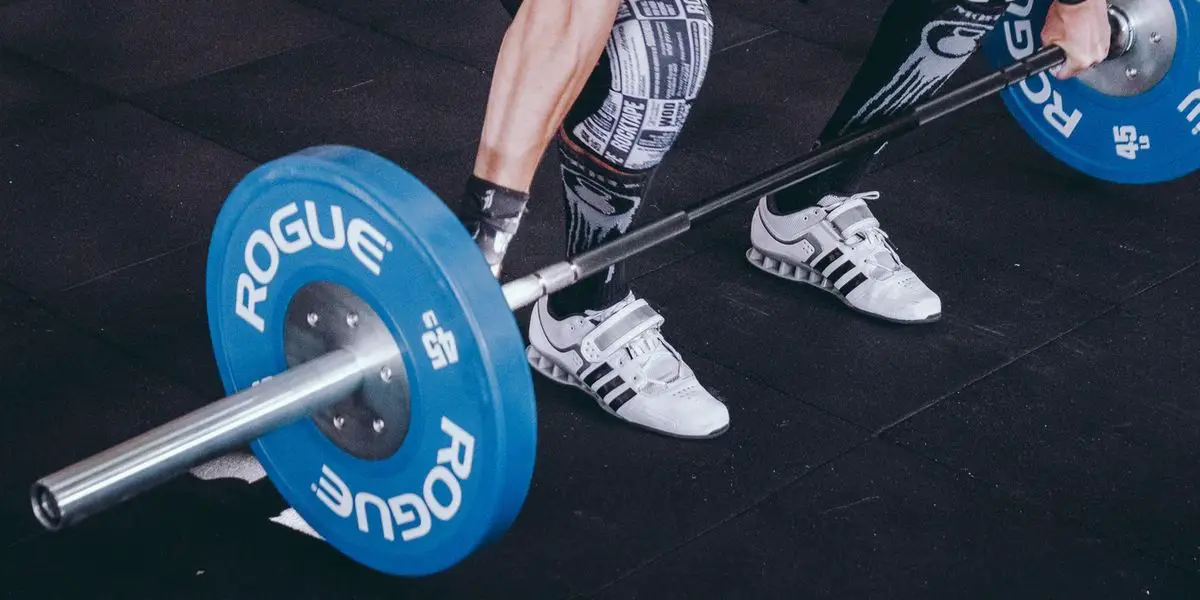So you’ve decided on an olympic bar. Do you know how to find a good one?
There are plenty of high-quality bars out there, but you need one that suits your own particular workout regimen.
If you’re not familiar with this type of bar, you may be surprised to find out that there are so many features that you need to consider before investing in one.
Let’s check some of these considerations out and find you one of the best olympic barbells for your garage gym.
Value
The big names in the olympic bar world make some great equipment. But so do some of the little guys. Look at the product itself, and keep cost and quality in mind when looking for yours.
Olympic Barbells Vs Others
First, you have to understand what you’re looking at before you find the best olympic barbell for you.
This type of bar adheres to some pretty strict dimension and construction standards.
A men’s olympic bar is 7.2 feet long and weighs 44 pounds. It’s outer ends are 2 inches in diameter and the grip section is 1.1 inches in diameter and 4.3 feet in length.
A women’s olympic bar is 6.6 feet long and weighs 33 pounds. The grip section is the same length as the men’s bar, 4.3 feet, but it is slightly smaller in diameter at .98 inches.
Those are the official dimensions, but manufacturers often offer models with slightly altered measurements.
How To Choose The Best Olympic Bar
Bars, especially this type, aren’t cheap. But you’ll get what you pay for. If you choose a random bar based on price, you’ll regret it. The same rings true if you buy based on the manufacturer. All good brands offer bars with different features.
You have to understand specs and features to make a good decision.
When I bought my first olympic bar, I picked one that looked awesome. But I ran into a few problems when I first used it.
First of all, it was too stiff. It barely flexed at all. That really ruined by Clean and Snatch. It felt almost as if I had too much weight on the bar, even though it was the same 200 pounds I used to lift back then.
The sleeves also felt really loose. This was because I was used to a power bar without rotating sleeves. I should have got an olympic bar with bushings and some more whip.
I don’t want you to have the same problem I did. Read on to learn about the specifics that you need to find the best olympic barbell for you.
What’s Whip?
“Whip” refers to the elasticity that nearly all weightlifting bars have. They flex when lifted and whip back straight at the apex of the lift. This is useful for some lifts, like the Clean and Jerk.
Here’s a short YouTube video that explains it succinctly.
I like a lot of whip. I only compete with myself nowadays, but I’m always pushing myself to go a little heavier. More whip helps with most two-part lifts.
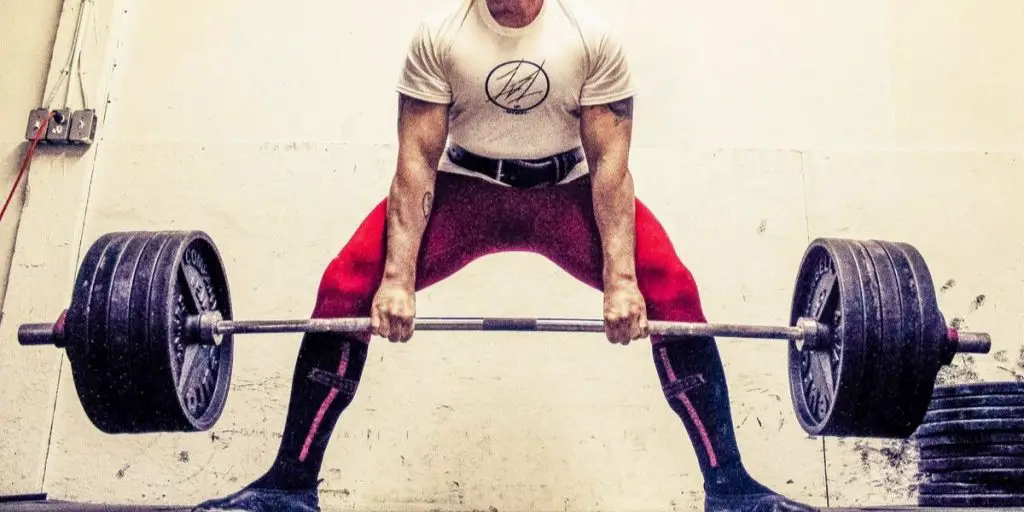
Weight Ratings Vs PSI
Here’s where a lot of people get confused. I can tell them the tensile strength rating of a bar, which is expressed as PSI, and the question immediately follows: What’s that in pounds?
Tensile strength refers to how much stretching force can be applied to steel before it breaks. When barbells bow under the force of the weights on their ends, they’re actually stretching.
A barbell with a tensile rating of 100,000 PSI, for example, can stand a pull of 100,000 pounds per inch. That doesn’t mean you can put 100,000 pounds of weight on them, of course. That would actually cause a tensile force of millions of pounds.
Let’s keep it simple: Settle for no less than 90,000 PSI. That’s the line between strong bars and cheap bars.
Now, about weight ratings. You may come across a bar that has a strength rating of 600 pounds, but you’ll see no mention of PSI at all.
Weight rating is a legit way to express a bar’s strength, as long as you’re dealing with a reputable manufacturer.
Guess the maximum weight capacity of a bar rated at 700 pounds. Hopefully you guessed 700. That’s how weight ratings work.
Go for a weight rating at least 100 pounds higher than the most you ever intend to lift with it.
Needle Bearings (Whatever They Are) Vs Bushings
The BEST OLYPIMC BARBELLS have sleeves that rotate as you lift them. That makes things easier on the wrists. The sleeves have either bearings or bushings that allow the rotation.
I admit it. I had to learn what a needle bearing is. It turns out that they are just like ball bearings, but the bearings themselves are cylinder-shaped instead of ball-shaped.
Bushings are simply metal collars inside the sleeves that allow them to rotate.
So which is better? That depends on your personal preference. Needle bearings are smoother and are usually found in more expensive bars. Bushings give a stiffer feel and can cut the manufacturing costs, which can make good bars more affordable.
Know Your Knurl
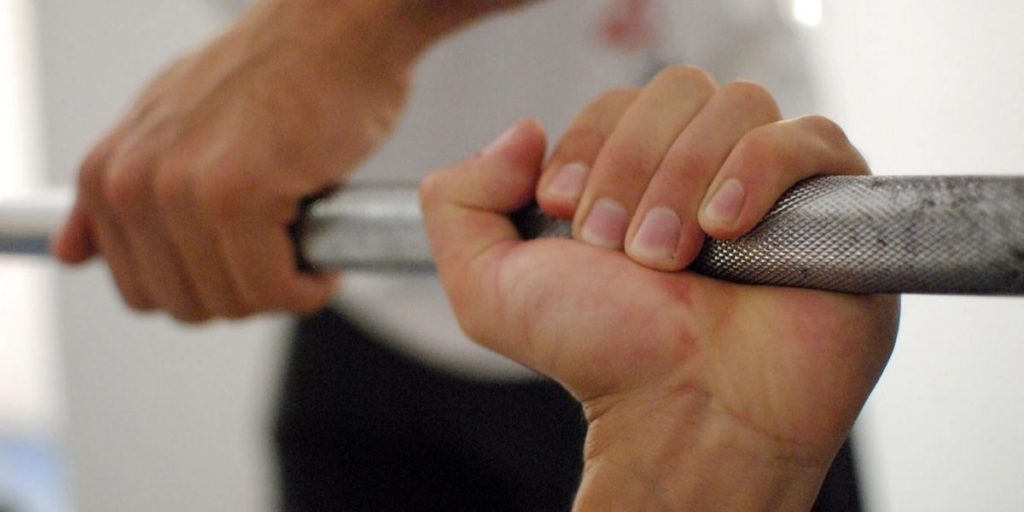
Knurling is the crosshatch pattern that is rolled or cut into the grip part of the bar’s sleeves. This used to be standard on olympic barbells, but manufacturers have been leaving the knurling off in recent years.
Do you need knurling? Again, this is a matter of personal preference. All the BEST OLYPIMC BARBELLS seem to have it. I like it because I don’t use workout gloves when I lift. I need some kind of traction. If you use gloves, you can probably do without knurl. Otherwise, you need it.
Knurl comes in different depths and patterns, but there isn’t really an industry standard for the depth or roughness of it. It’s described as rough, fine and in similar terms. I’ve made an extra effort to describe the knurling of the cool bars I’ve reviewed below.
Consider Your Weights
Here’s another mistake I made when I got my first olympic bar. I didn’t realize that my power bar weights wouldn’t fit it. Olympic bars have a diameter of 2 inches. That’s an inch bigger than the weights I had been using.
I just want you to know that you’re going to have to invest in some weights if this will be your first bar of this type.
The Best Olympic Barbells for Any Budget
I found five of the best olympic barbells while doing some background research. They all pass the strict standards we’ve set for both bars for both beginners and intermediate lifters.
Each of these bars has some unique aspects, and they all have some pros and cons.
Could one of these be the best for you?
CAP Barbell “The Beast” Bar
This 7-foot bar is made of 110,000 PSI cold rolled steel. It can handle more than you can lift.
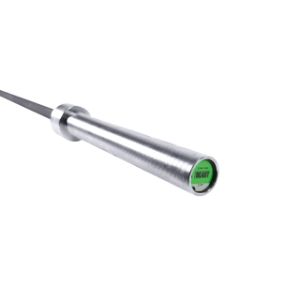
The sleeves are 15 inches in length, which gives you plenty of room for weights. And the sleeves rotate on bushings, so this may be a great bar for you if you want a bit of a stiffer feel during the lift.
There is no knurling on the center two feet. That part is completely smooth. Where you’ll grip the bar on each side is a medium knurl 7.75 inches in length. I would prefer a bit more, but I like a very coarse and wide grip.
Don’t worry about the knurling on these grips being too sharp. While this one is affordable, there aren’t any cut corners here. Very thoughtful machining goes into CAP bars.
I would call the whip moderate. It has plenty of spring for a quick lift. Slower lifts will feel pretty stiff with this bar.
I like the look of this one. The shaft is black phosphate, and the sleeves are polished chrome. That makes for a nice contrast.
The Beast is a favorite of gym owners in some parts. Part of the reason for that is its decent price, sure. But it’s no-knurl center makes it good for a variety of lifts. I’d use this versatile bar for bench pressing, deadlifts and two-part lifts.
A good price, moderate whip, high strength and versatility makes this olympic bar a good candidate for beginners.
Pros:
Affordable
Moderate whip – good for beginners
Decent knurling – not too aggressive and not too light
Cons:
No center knurling – not ideal for squats
CAP Barbell “The Boss” Bar
The Boss compares to The Beast, but there are a few key differences.
The first thing I want to point out is the center knurling. You have 4.75 inches of it. That’s great for squats. I won’t even try a squat with a bar with a smooth center anymore.
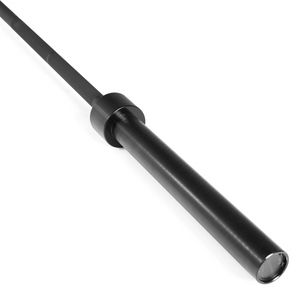
On either side of the center knurling is 7.75 inches of smooth bar. And on either side of that is 7.75 inches of medium-knurled grip.
The polished chrome sleeves spin on brass bushings, just like The Beast. Expect the same feel from the two. The essential construction is the same.
At 132,000 PSI, this steel is stronger and more rigid. Keep in mind this means less whip. That doesn’t detract from the value of this bar, of course. Some lifters like to have a springier one and a more rigid one for different lifts. This would fit the bill for a stiffer bar.
These sleeves are also 15 inches long, so you can load the same number of weights. The tougher steel means those weights can be heavier.
Pros:
Center knurling makes this bar good for most any lift
130,000 PSI steel is super-strong and durable
Knurling similar to The Beast – most lifters will be happy with it
Cons:
Lower-than-average whip makes this bar a bit stiff for most beginners
Synergee Regional Olympic 20kg Men’s and 15kg Women’s Hard Chrome & Black Phosphate Barbell
Synergee doesn’t play around. They make strong bars with good sleeve spin and whip.
Both the men’s and women’s bars brag a tensile strength of 190,000 PSI and a weight rating of 1,700 pounds. That’s impressive as it is, but to make a bar with that much strength be able to whip at all is pretty amazing.
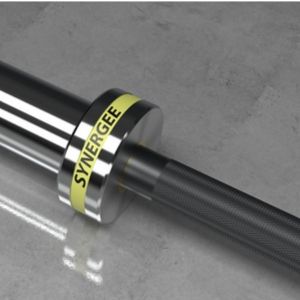
The whip capabilities of these make them really good for Clean and Jerk lifts as well as any other two-part lifts. Squats and presses are slower lifts, so whip doesn’t come into play as such.
Synergee’s women’s bar is the standard 15 kilograms and 79 inches. It has 13-inch sleeves and a no-knurl center.
The men’s option is also the olympic standard of 20 kilograms and 86.75 inches. It’s sleeves are 15 inches long, which is all you should ever need.
Both feature a consistent 1.2-millimeter knurl on the grips. Kudos to Synergee for specifying the exact depth of their knurl!
These sleeves turn smoothly, thanks to five needle bearings on each side. If you’ve never lifted a bar with bearings, you don’t know what you’re missing. They give my lifts a nice balanced feel.
Pros:
A remarkable combination of strength and whip
Official specs
Deep, consistent knurling
Needle Bearings for smooth sleeve rotation
Cons:
This is getting to the pricier end of its quality class, although it’s still a good value
A little too much whip for pressing over 420 pounds and up
XMark Lumberjack 7′ Olympic Bar and Optional Texas Star Olympic Weight Plate Sets
Here’s another cool men’s bar that’s built to official specs.
What stood out to me right away is the black magnese phosphate coating. I can’t imagine this thing ever getting a bit of rust on it. That’s great because you know how easily sweat can cause rust on workout equipment.
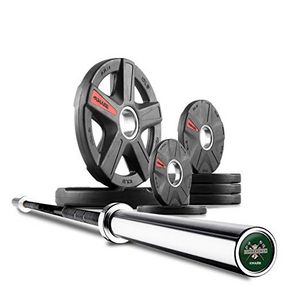
The knurling is more aggressive than most other olympic bars I’ve seen. I like that though. If it’s too much for you, you can always wear a thin pair of workout gloves.
The 15-inch polished chrome sleeves have brass bearings for a nice tight rotation. They’re not as smooth as bearings, but they give the bar a heftier feel.
The 700-pound weight limit is plenty for me. Congratulations to you if you need more than that!
Moderate whip makes this a good all-around bar for most lifts.
Let’s talk about the optional Texas Star Olympic Weight Plate Set.
The total weight of all the included plates combined is only 185 pounds. That’s good for moderate bench presses, squats and similar repetitive lifts. I would want more for Clean and Jerks.
The plates have wide openings, so they’re easy to handle. That’s good because the hubs are so tight. Collars are not included with the set, so you’ll have to buy some separately.
I love the tough rubber coating on these weights. It eliminates clanking. But they do smell at first. It takes about a week for them to off-gas, then the strong rubbery smell will disappear.
Pros:
Moderate whip
Official specs
You can save money by purchasing the set if you need weights
Cons:
The heavy knurling may be too much for some lifters
The weights’ coating takes a full week to stop stinking. You may have to let them off-gas outdoors because the smell is so strong.
Body-Solid Tools Olympic Straight Bar
Are you on a budget? I know I am. We’ve included this bar because it’s a nice one for thrifty lifters like us.
It weighs a full 44 pounds and has the expected 7-foot length. The sleeves are also the standard 15.5 inches long. Fair warning: The collars are bolted on. This isn’t really a big deal, but you have check them occasionally to make sure they haven’t loosened.
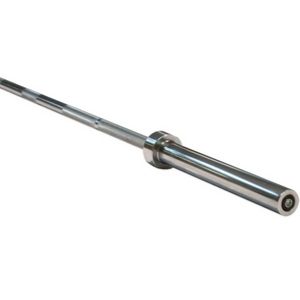
The black steel bar is rated for 600 pounds. Its solid sleeves are also steel, not chrome. Polished chrome is just for looks, anyway.
I like the simple design here. The moderate knurling goes the length of the shaft. It’s simple and practical. That’s where the savings comes from: a simplified manufacturing process.
The whip is a bit stiff. You can still do two-part lifts, but you’ll feel every bit of the weight. Of course, this isn’t an issue at all when pressing or squatting.
All-in-all, I have to say that this simple bar has a great value. If you use it very often, you will eventually have a problem with the collar screws getting wonky. But even with heavy use, it should last for years.
Pros:
Nice price
Simple design
Good strength
Cons:
Low whip
Bolted collars
The Final Word
When shopping for the best olympic barbells for your garage gym, the features you need trump fancy brand names. Pay attention to measurements, whip, strength ratings and knurling.
Do you know what you need? Maybe a good bar that you’ve used at a gym sticks out in your mind. If so, you’re likely thinking of its knurling or whip. These are the two things you’ll notice most when lifting.
If you’re a beginner, it’s best to choose moderate knurling and whip. You can’t go wrong, and you can scale either up or down when you’re ready for another bar.
Remember that many bar makers are omitting center knurling on some of their newer models. Be sure to check for it if it’s important to you.
Weight ratings are useful, but you may want to understand steel PSI if you decide to shop for a very strong bar. Check out this website for a detailed explanation of tensile strength.
I’ve spent some time here talking about the strength of various bars. This isn’t just important for a good workout. It’s a safety concern.
Never overload a bar, and always be sure your clamps and collars are secure.
- 5 Best Power Towers For Your Home Gym - July 19, 2023
- What Does Natty Mean in Body Building? Is It Good or Bad? - June 26, 2023
- How Much Creatine Is In Bang? The Amount Might Surprise You - June 25, 2023
